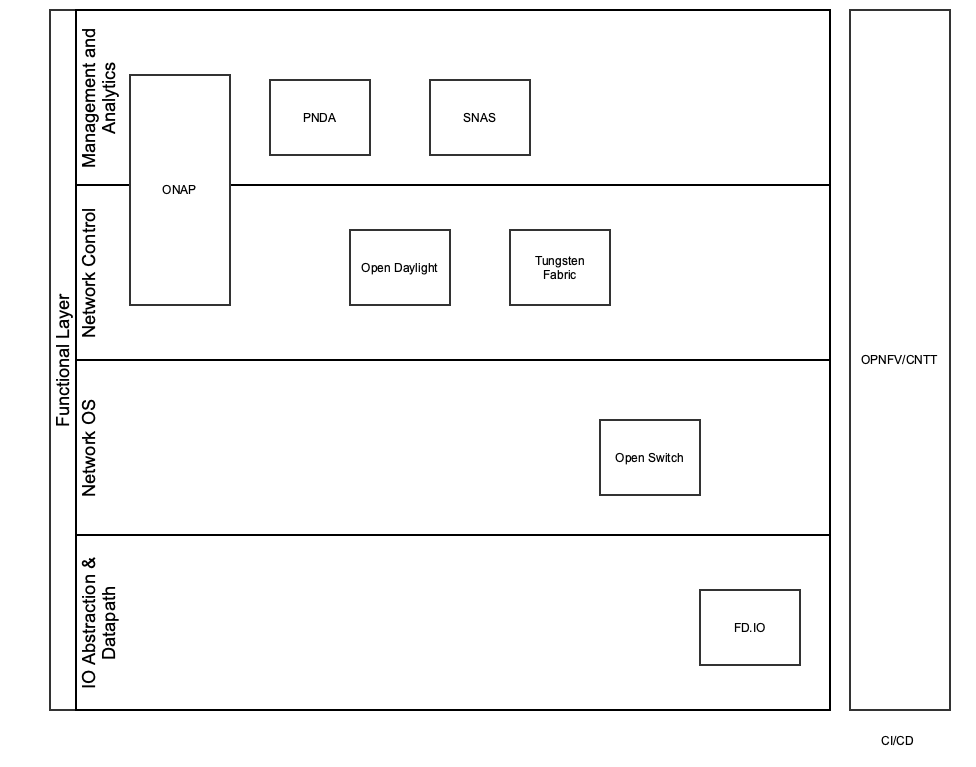Internal Landscape
It’s worth looking at the projects within the LFN umbrella in the context of the network itself.
LFN projects offer functionality related to the different layers required for building a modern network.
This starts with the Transport Layer (also referred to as the 'Datapath'), where user data is moved from one point to another, speed and reliability are key. The FD.io project focuses on fast packet processing, promising to move data up to one hundred times faster. FD.io’s work applies to multiple layers of the network including Layer 2 Data, Layer 3 Network, Layer 4 Transport, Layer 5 Session and Layer 7 Application.
The next layer is the Network Operating System, where the essential software components required for building a network device are integrated and packaged together. Open Switch is a Network Operating System that abstracts the complexity and hardware implementation details of network devices, and exposes a unified interface towards the higher network layers.
The Network control layer is where end to end complex network services are designed and executed. It relies heavily on network modeling, that allows network designers to create the desired services. ONAP, Open Daylight and Tungsten Fabric take network service definitions as input, break them into their more basic building blocks, and then interface with the lower layers of the network to instantiate and control the service components. The network control layer also provides the interface to Operational and Business Support Systems (OSS/BSS) where ONAP provides the management and orchestration functions that ensure OSS/BSS can manage modern dynamic networks.
The top layer of the network functionality includes the components which provide visibility into the state of the network as well as automated network management. PNDA and SNAS can collect high volumes of network data in real time, and make them available to external management systems. ONAP is another entity that collects network performance and fault data. All the collected data can be used by the ONAP policy driven control loop automation which can take action to dynamically control the network in response to changing demand. Network faults may also be detected in this layer and in many cases the combined analytics capabilities of the projects can be used to trigger automation that provides self healing functionality to the network.
The OPNFV and CNTT projects focus on the integration of the different layers and provide tools and reference architectures for building networks. In addition, those projects provide certification programs for the network infrastructure and network functions that ensures that the different components of the network are fully compatible with each other and provide the expected functionality and performance.

External Landscape - Other open source projects, Standards Definition Organizations (SDOs)
Editor - Lingli Deng